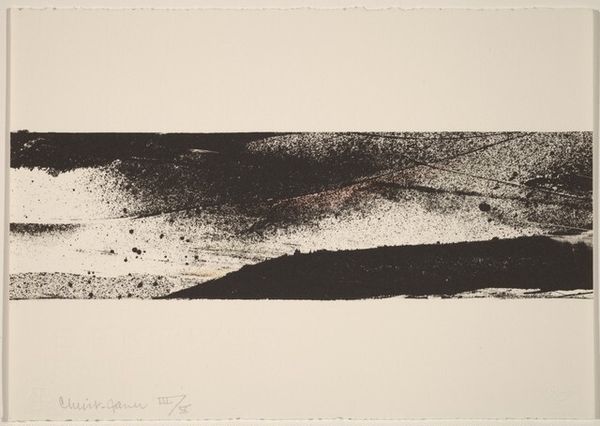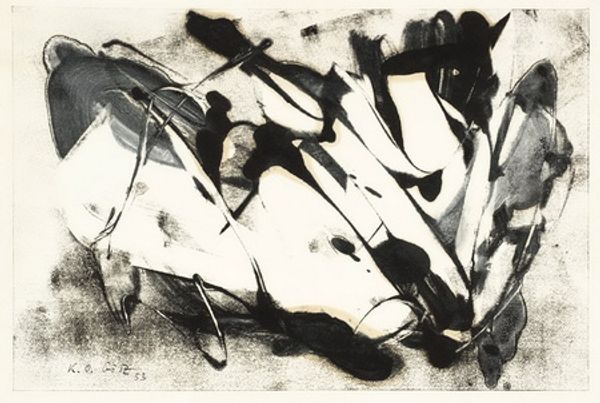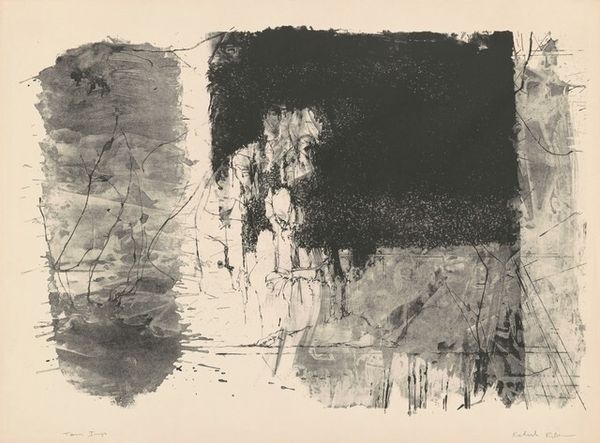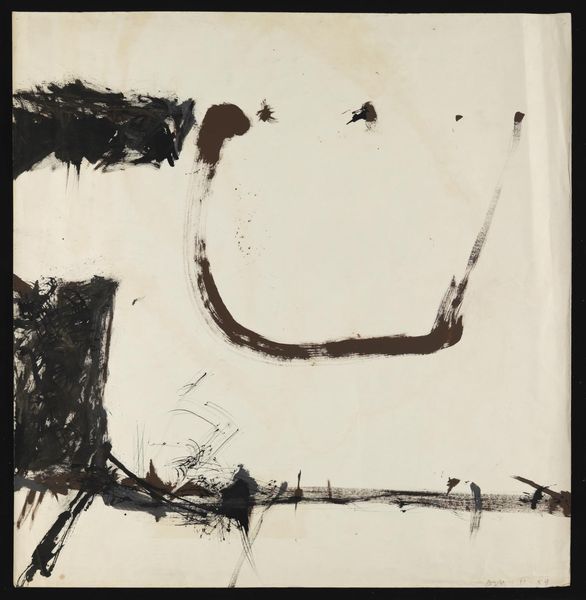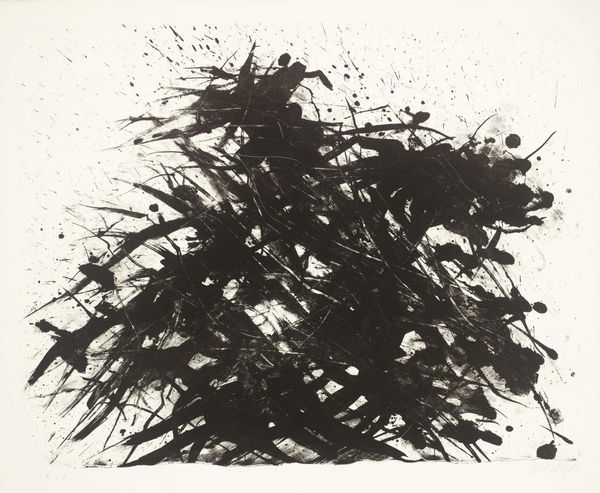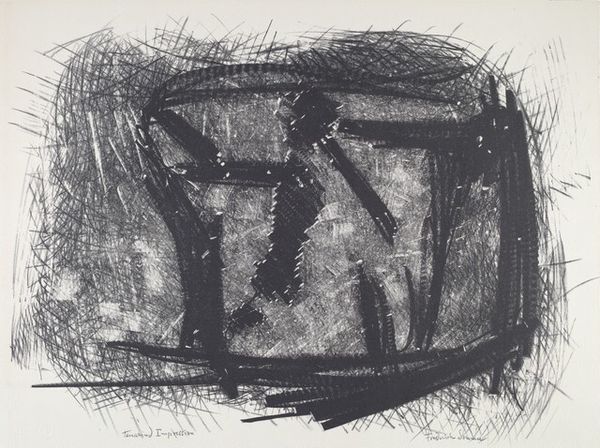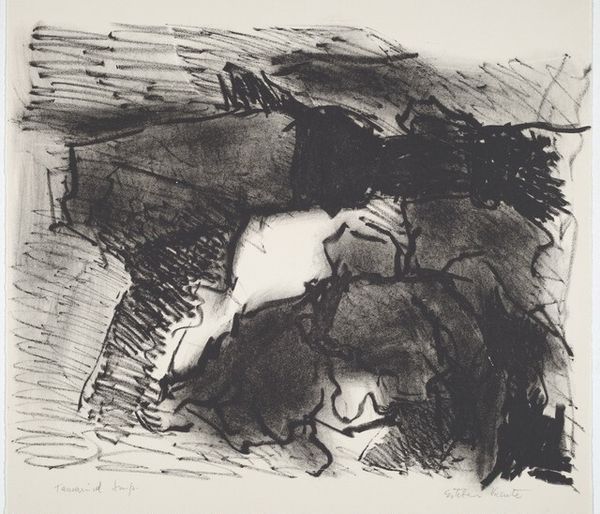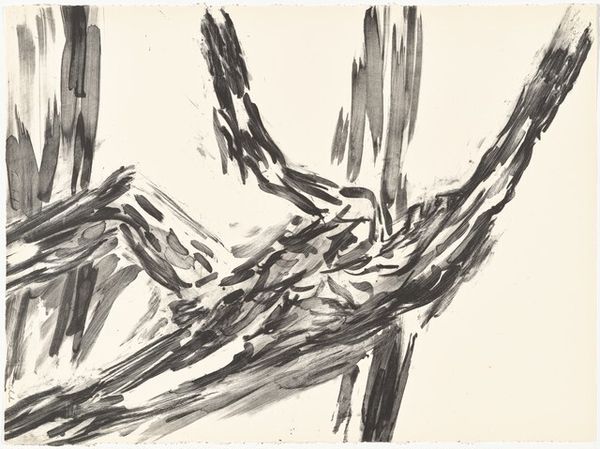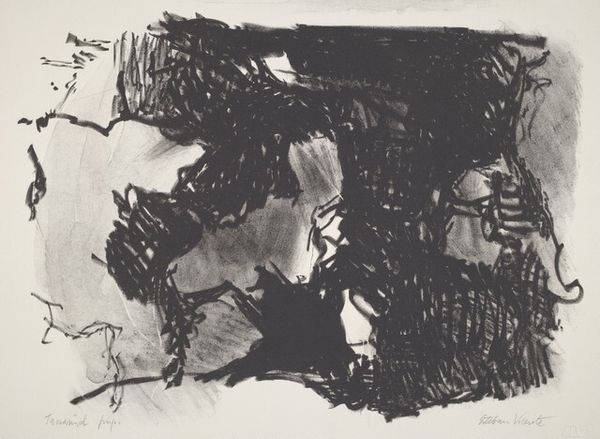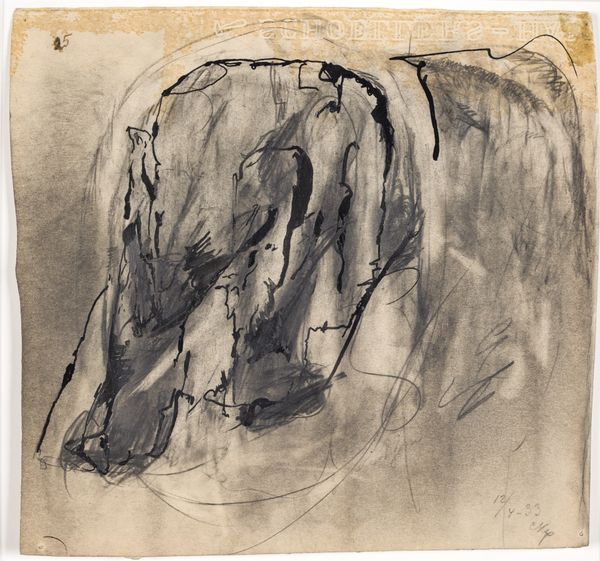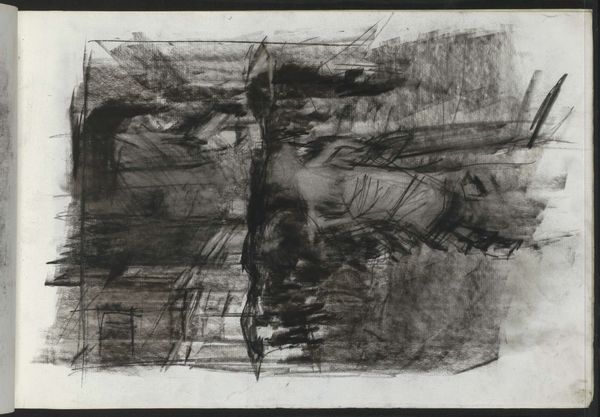
drawing, ink
#
abstract-expressionism
#
drawing
#
organic
#
etching
#
organic drawing style
#
ink
#
ink drawing experimentation
#
abstraction
Copyright: Julius Bissier,Fair Use
Editor: So, here we have an untitled ink drawing by Julius Bissier, dating back to 1950. It's quite abstract; bold black forms contrast with the stark white paper. How might we approach interpreting a piece like this? Curator: Focusing on materiality reveals a great deal. Consider the immediate post-war context in 1950. Traditional materials, often scarce or rationed, demanded resourcefulness from artists. The ready availability and low cost of ink become central to Bissier’s practice. Does this direct encounter with ink and paper, its inherent immediacy and potential for gestural expression, challenge the conventional boundaries between high art and craft? Editor: That's interesting – thinking about the economic accessibility influencing the choice of ink… I hadn't considered that. It makes me think about how important materials are in defining art. What do you think the process was like here? Curator: Precisely. Imagine Bissier's process. Ink, unlike oil paint, offers limited opportunities for correction. This speaks to the importance of automatism, chance, and even embracing imperfection in his work. How does that immediacy shape our understanding, versus a meticulously rendered oil painting? The paper itself - its texture, absorbency - plays a crucial role in how the ink bleeds and settles. It transforms the artist’s touch into a collaborative dance. How can an investigation into the labor involved transform our reception of it? Editor: I see what you mean. By focusing on the ‘how’ and ‘why’ of the materials, we can gain a richer perspective beyond just the aesthetics. I never thought about ink as democratizing in this context! Curator: Exactly! It reveals how material limitations or choices become a language in themselves, pushing artistic boundaries. Editor: So, in the end, looking at art this way changes how we appreciate it? Curator: Absolutely! By examining the materiality, the labor and the context, we uncover hidden dimensions.
Comments
No comments
Be the first to comment and join the conversation on the ultimate creative platform.

